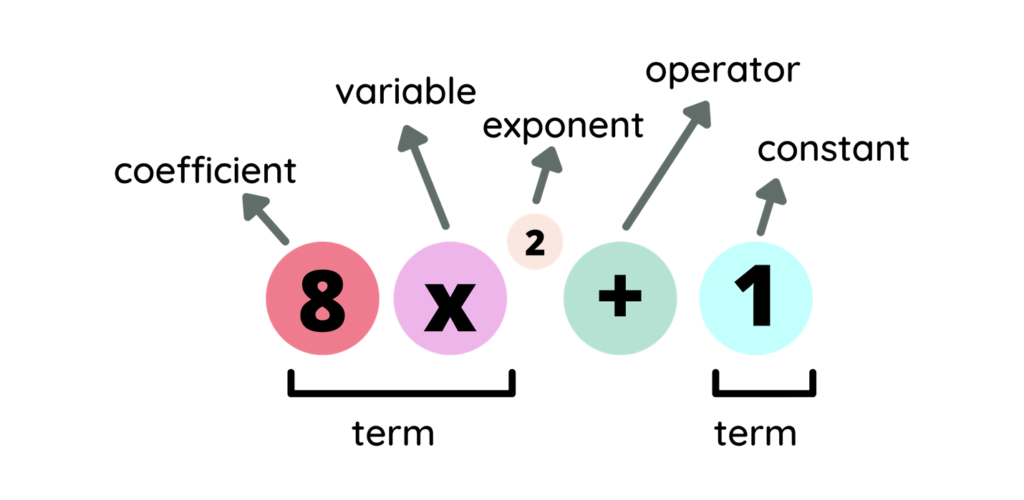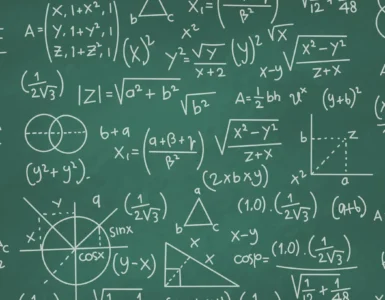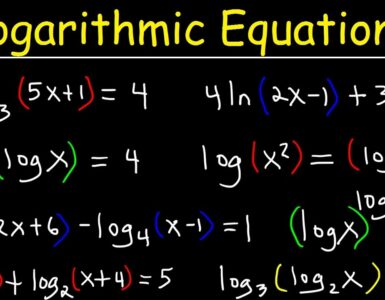Polynomials are one of the most fundamental and versatile structures in algebra. From solving equations to modeling real-world phenomena, polynomials play a key role in both mathematics and applied sciences. Understanding the properties of polynomials, their types, and how to manipulate them is essential for progressing in algebra, calculus, and beyond. In this article, we will explore what polynomials are, their classifications, operations, and practical applications.
What is a Polynomial?
A polynomial is a mathematical expression involving variables (often denoted as $x$) raised to whole-number powers, combined using addition, subtraction, and multiplication by constants (known as coefficients). Formally, a polynomial in one variable $x$ can be written as:

Where:
- $a_n, a_{n-1}, \dots, a_0$ are constants (called coefficients),
- $x$ is the variable,
- $n$ is the degree of the polynomial (the highest exponent of the variable $x$).
The terms of a polynomial are separated by addition or subtraction. For example:

This is a polynomial of degree 4 (the highest power of $x$ is 4), where the coefficients are 3, -2, 5, -1, and 7.
Key Terms in Polynomials
Before we dive into operations with polynomials, let’s define some key terms that will help in understanding how polynomials function:
- Degree: The degree of a polynomial is the highest exponent of the variable in the expression. For example, the degree of $4x^5 – 3x^3 + x – 2$ is 5.
- Term: Each part of the polynomial (such as $4x^5$, $-3x^3$, and $x$) is called a term.
- Coefficient: The numerical factor of a term is its coefficient. In the term $4x^5$, the coefficient is 4.
- Constant Term: The term in the polynomial that does not involve a variable (the value remains constant). In $2x^3 – 5x + 6$, the constant term is 6.
Types of Polynomials
Polynomials are classified based on their degree and the number of terms they contain.
1. Classification by Degree
- Constant Polynomial: A polynomial of degree 0. Example: $P(x) = 7$.
- Linear Polynomial: A polynomial of degree 1. Example: $P(x) = 3x + 2$.
- Quadratic Polynomial: A polynomial of degree 2. Example: $P(x) = x^2 – 4x + 3$.
- Cubic Polynomial: A polynomial of degree 3. Example: $P(x) = 2x^3 + 5x^2 – 3x + 4$.
- Quartic Polynomial: A polynomial of degree 4. Example: $P(x) = x^4 – 2x^3 + 3x^2 – x + 5$.
2. Classification by Number of Terms
- Monomial: A polynomial with only one term. Example: $7x^3$.
- Binomial: A polynomial with two terms. Example: $2x + 3$.
- Trinomial: A polynomial with three terms. Example: $x^2 – 4x + 6$.
Operations with Polynomials
Polynomials can be added, subtracted, multiplied, and divided, and these operations follow certain rules.
1. Addition and Subtraction of Polynomials
Adding or subtracting polynomials involves combining like terms—terms with the same variable raised to the same power.
Example: Adding Polynomials Given $P(x) = 3x^2 + 4x + 5$ and $Q(x) = 2x^2 – x + 7$:

Combine like terms:

Example: Subtracting Polynomials Given $P(x) = 4x^3 – 3x^2 + 2x – 1$ and $Q(x) = x^3 + x^2 – 3x + 5$:

Distribute the negative sign:

Combine like terms:

2. Multiplication of Polynomials
To multiply polynomials, each term in the first polynomial is multiplied by every term in the second polynomial. This process is often referred to as the distributive property or the FOIL method for binomials.
Example: Multiplying Polynomials Multiply $P(x) = x + 2$ and $Q(x) = x^2 – 3x + 1$:

Distribute each term in $P(x)$:

Simplify:

Combine like terms:

3. Division of Polynomials
Polynomial division can be done using long division or synthetic division (if the divisor is a linear polynomial).
Example: Long Division Divide $P(x) = x^3 + 2x^2 – 5x – 6$ by $D(x) = x – 2$:
Divide the leading term of $P(x)$ by the leading term of $D(x)$:

Multiply $x^2$ by $D(x)$ and subtract from $P(x)$:

Repeat the process:
- Divide $4x^2$ by $x$ to get $4x$.
- Multiply and subtract: $4x^2 – 5x – 6 – (4x^2 – 8x) = 3x – 6$.
- Divide $3x$ by $x$ to get $3$.
- Subtract: $3x – 6 – (3x – 6) = 0$.
Thus, the quotient is $x^2 + 4x + 3$.
Factoring Polynomials
Factoring is the process of breaking down a polynomial into simpler components (factors) that, when multiplied together, give the original polynomial.
Common Factoring Methods:
- Factoring out the Greatest Common Factor (GCF): Find the largest factor common to all terms and factor it out.
- Example:

- Factoring Quadratics: For quadratic polynomials, find two numbers that multiply to give the constant term and add to give the middle coefficient.
- Example:

- Difference of Squares: A polynomial in the form $a^2 – b^2$ can be factored as:

- Example:

- Factoring by Grouping: Group terms with common factors and factor each group.
- Example:

Applications of Polynomials
Polynomials are used in various real-world applications, ranging from engineering to economics and computer graphics:
- Physics: Polynomials describe the motion of objects under constant acceleration, such as the position function $s(t) = at^2 + bt + c$.
- Engineering: Engineers use polynomials to model stresses, loads, and material properties. For example, polynomials help describe the shape and motion of structures in civil engineering.
- Economics: In economics, polynomials are used to model profit functions, cost functions, and revenue models, allowing analysts to forecast growth and optimize resources.
- Computer Graphics: In computer graphics, polynomials are used to describe curves and surfaces, such as Bézier curves, which are essential for rendering smooth shapes and animations.
Common Mistakes to Avoid
- Not Combining Like Terms Properly: When adding or subtracting polynomials, ensure that you only combine terms with the same degree.
- Forgetting to Distribute Correctly in Multiplication: When multiplying polynomials, each term in one polynomial must be multiplied by every term in the other.
- Misapplying Factoring Methods: Use the appropriate factoring method based on the form of the polynomial (e.g., difference of squares, quadratics).
Conclusion
Polynomials are the building blocks of algebra and play a crucial role in solving a wide range of mathematical problems. Whether you are adding, subtracting, multiplying, or factoring polynomials, mastering these operations is essential for understanding more advanced topics in mathematics and for applying mathematical models to real-world scenarios. With their versatility and power, polynomials continue to be an invaluable tool in both theoretical and applied mathematics.




Add comment